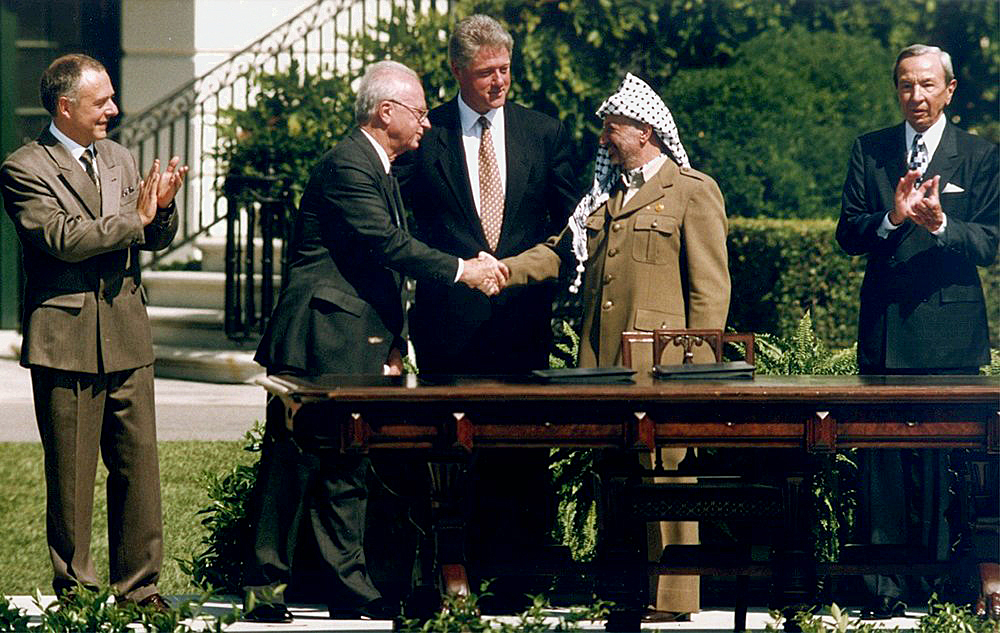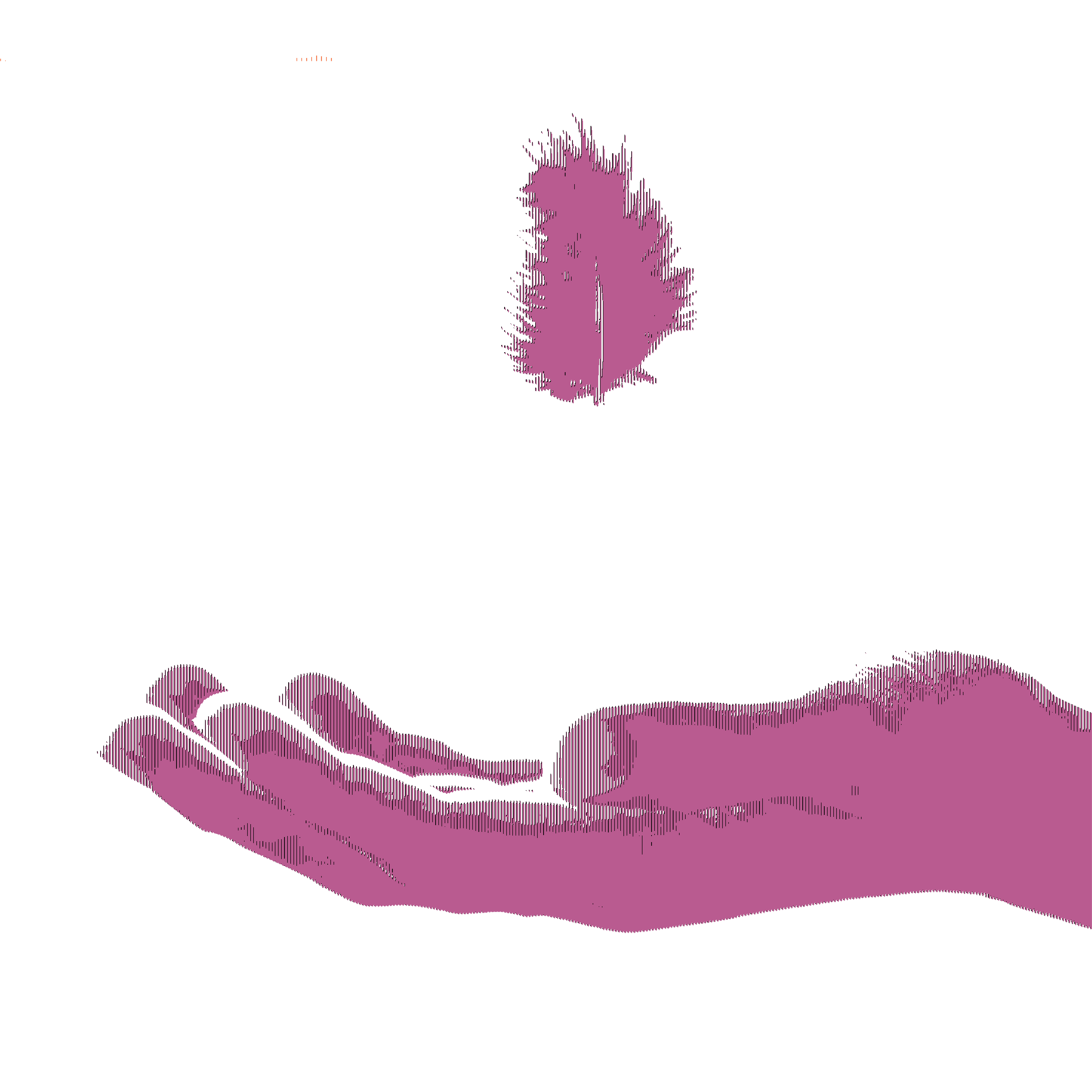At a school in the Jerusalem neighborhood of Pat, Amir Parkeh, 12, wore his soccer shirt today. He played a game Tuesday night, but when asked what he likes about his team, he didn't provide its won-lost record. "We are one group, we are Jews and Arabs, but we're together," he said.
A Palestinian living in the Jewish neighborhood of Talpiyot, and studying in the integrated Max Rayne Hand in Hand Jerusalem School, he's an anomaly in a city that seems ever more divided. There are just a handful of schools in all of Israel in which the numbers of Jews and Palestinians are similar. This public school, serving 650 students whose parents pay a modest tuition to cover extra teachers, sits in Jewish Pat, but just across an olive grove from Beit Safafa, one of the city's largest Palestinian-majority neighborhoods.
The animosity that makes the nightly news doesn't play out within the beautiful school compound, where laughing kids dash across the open-air walkways that divide the elementary from the middle from the high school wings. "If you want to compare what's happening on the outside, it's a safe place," said Nadira Hussein, who teaches Arabic and Islam to Jewish and Palestinian kids, both boys and girls.
The outside, though, sometimes intrudes.
In November, said school communications coordinator Noa Yammer, "three Jewish extremists broke into the school" on a Saturday night, wrote anti-Palestinian graffiti on the walls, and set fire to a classroom. The community and then the world rallied around the school, and two of its students accepted an invitation to the White House.
Now tensions over control of the city's Temple Mount, stabbings and stone-throwing by Palestinians, and responsive fatal shots by Israeli police and soldiers, are having ripple effects. With concrete barriers going up between many neighborhoods, and hostilities at a boil, just getting to school is tough.
"There are students in [mostly Palestinian] East Jerusalem, it takes them three hours to get out of their neighborhood," said Ms. Yammer. Both Jewish and Palestinian parents have pulled their kids off buses -- sometimes targets of violence here -- and are driving or walking them to school.
Despite the headwinds, Alan Freeman, vice president of The Jerusalem Foundation, which built the school, is trying to raise $10 million to expand the building serving its upper grades. His goal of 40 years is to build "that middle ground and push back the extremes and create this reasonable and tolerant situation in Jerusalem."
"Very, very difficult"
Reasonable and tolerant are not what you see on the news. And on the streets on this relatively quiet day, a dozen soldiers mill around the Old City's Jaffa Gate, while modest knots of tourists shop and cab drivers complain that they haven't had a fare since morning.
In recent weeks, the half-century-long balance of religious rights on the Temple Mount has wavered, as Muslims and Jews jockey for influence on the world's most contentious piece of real estate, which includes Judaism's revered Western Wall and Islam's Dome of the Rock and Al-Aksa Mosque compound.
This week many Jews are enraged by a resolution before the United Nations Educational Scientific and Cultural Organization that would seek to reclassify the Western Wall as part of the Al-Aksa Mosque complex. The United States opposes that resolution. Palestinian Authority President Mahmoud Abbas has claimed that the Israeli government is wrongly restricting Muslim prayer at Islam's third-holiest place. Today Mr. Abbas met with United Nations Secretary-General Ban Ki-Moon in nearby Ramallah.
The Jerusalem Foundation aims to serve Muslims, Christians and Jews, by improving education, supporting culture and providing spaces for shared recreation. It boasts $1 billion in investment in Jerusalem over nearly 50 years, spread over 4,000 projects.
Even in those places blessed by the foundation's giving, you see a city that walks with invisible shackles.
Adina Wiluzanski, an Ultra-Orthodox Jew from Uruguay, was just starting to pay off her loans and turn a profit on her quaint dress shop, Aquarella, before the troubles severely dampened foot traffic. Now, as two heavily armed soldiers sit at the nearby light rail station, she's working with The Jerusalem Foundation to secure more financing.
The integrated Jerusalem Youth Chorus and a filmmaking group also associated with the Jerusalem International YMCA have seen the Palestinian kids or the Jewish kids suddenly fail to show as anger and fear ebb and flow. [The Jewish Federation of Greater Pittsburgh has been a key funder of the filmmaking group.] Though the goals of both programs are to get Jewish and Palestinian kids to both do things and talk together, sometimes physical and psychological barriers temporarily trump the friendships that have developed, said Micah Hendler, founder and director of the chorus.
"These kids are hanging out on their own time," said Mr. Hendler, but lately they're too often texting their regrets. "The recent tensions are making things very, very difficult in Jerusalem."
Walled off
Saad Khatib can't make the meeting he'd hoped to have today with fellow members of a think tank called Aix Group, which includes Palestinians and Jews who look for ways to cooperate economically.
"Quite a few neighborhoods have been kind of blocked off with checkpoints and big cement blocks, and getting around is extremely difficult," said Mr. Khatib. "It's almost impossible to get together."
It hasn't always been that way.
Growing up in Warren, Ohio, and going to school at Youngstown State University and Ohio State University, Mr. Khatib hung out with Christians, Jews, Hindus … religion didn't matter.
"Even here, until the year 2000, I used to go out with my Jewish friends to Tel Aviv, to Jerusalem. They used to come out to Ramallah," the Palestinian administrative center, he said. "It is no longer acceptable in Palestinian society to be seen with Israelis. It is no longer acceptable in Israeli society to be seen with Palestinians."
He's worried about the effect of the two cultures' separation on his daughter, 16, and son, 14.
"My daughter, who was born in 1999, has never had the opportunity to deal with Israelis that are not army people," Mr. Khatib said. "The only Israeli she knows is an Israeli standing at a checkpoint pointing a gun at her father. … I try the best that I can to try to convey that not all Israelis are like that. … She doesn't see anything positive. That's the problem."
Mr. Khatib, 50, was born in East Jerusalem when it was part of Jordan, but in the 1967 Six-Day War Israel took control of the city and the West Bank.
The family moved to Jordan, and then to Beirut, Lebanon, as his father, Omar Khatib, helped to build the Palestine Liberation Organization, first as part of its military wing, and then as a diplomat.
Mr. Khatib's mother had brothers in Ohio, so in 1978 everyone except the father moved to Warren. His father could not visit because senior PLO officials were not allowed in the United States, so most summers he the son traveled to Cyprus, Tunisia or Morocco to meet him.
Shortly after he finished his law degree, Saad Khatib moved to Jordan, becoming an advisor to one of the Palestinian negotiating teams then in talks with Israel. That period led to the Oslo Accords, an arrangement that was supposed to lead to peace, but is now hanging by a thread. A key early blow to the process was the 1995 assassination of Israeli Prime Minister Yitzhak Rabin by a Jewish extremist. The 20th anniversary of that turning point will be commemorated in Israel Sunday.
"I personally think Rabin's assassination just turned everything around and everything went downhill from then on," he said.
Still hopeful, he moved to East Jerusalem, managing Palestine Online and becoming an advisor to the Ministry of Economy in Palestine. He married and started a family in the well-off Palestinian neighborhood of Kafr 'Aqab.
Around 2002, though, the security wall built by Israel to thwart terrorism separated Kafr 'Aqab from the rest of Jerusalem. Mr. Khatib can see the wall, around 100 feet away, from his home.
Getting around the wall is a daily headache, involving checkpoints, ID checks, sometimes searches of his car trunk that turn a five-mile journey into a 30-to-60-minute trek. When the Israeli government adds more road blocks, many people just give up, he said.
He said he's still hopeful for some accommodation between Palestinians and Israelis, even as the rhetoric between the leaders and the tension in the streets heat up.
"This is not the way I want to bring my kids up," he said. "This is not the way I want my life to be."













